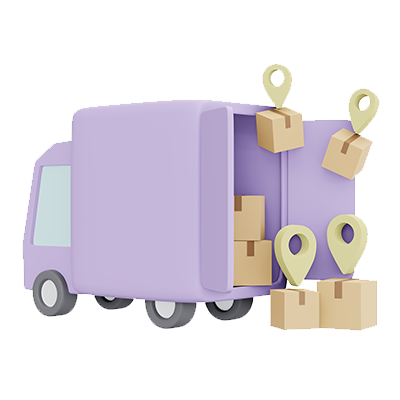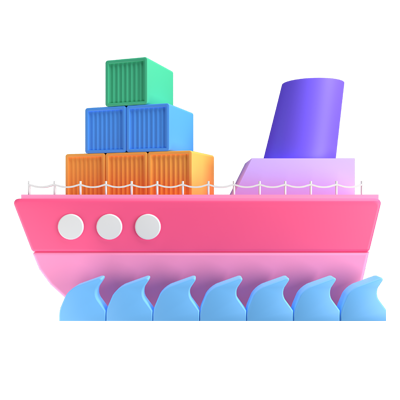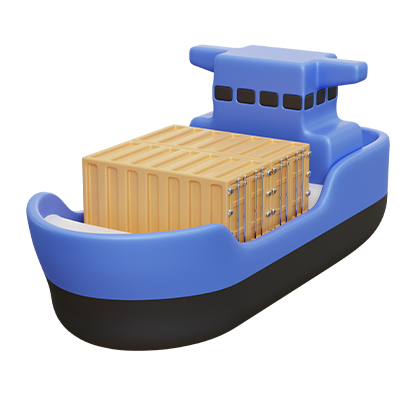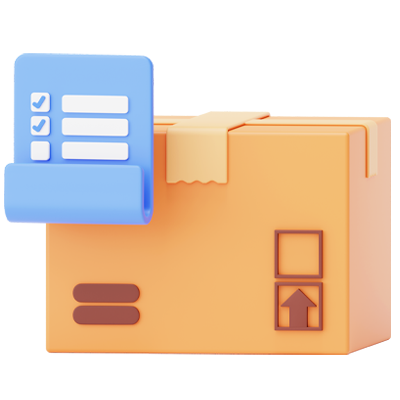Shipping from UAE to Japan.

Overview of the shipping service from UAE to Japan
DXBFLY is a leading shipping company based in Dubai, United Arab Emirates, providing seamless and efficient shipping services from the UAE to Japan. In today’s fast-paced global economy, the importance of a reliable, timely, and cost-effective shipping service cannot be overstated. At DXBFLY, we understand the critical role that shipping plays in international trade, and we are committed to offering our customers the best possible solutions for their shipping needs.
Why choose DXBFLY for shipping from UAE to Japan:
Extensive experience and expertise: With years of experience in the shipping industry, DXBFLY has developed a deep understanding of the unique requirements and challenges involved in shipping from the UAE to Japan. Our skilled team of professionals, with their vast knowledge of international shipping regulations, ensures that your goods are delivered safely and efficiently.
Comprehensive shipping solutions: DXBFLY offers a wide range of shipping options to cater to the diverse needs of our customers. Whether you require air freight, sea freight, or a combination of both, we can provide a tailored solution that meets your specific requirements. Our services include door-to-door delivery, port-to-port shipping, and customs clearance assistance.
Competitive pricing: At DXBFLY, we understand the importance of providing affordable shipping solutions without compromising on quality or service. We leverage our strong relationships with leading carriers and shipping partners to offer competitive rates for our customers.
Advanced tracking technology: With DXBFLY’s advanced tracking technology, customers can monitor the progress of their shipments in real-time. Our user-friendly online tracking system allows you to stay informed about the status of your shipment, providing you with peace of mind and ensuring that you are always in control.
Exceptional customer service: At DXBFLY, we take pride in providing exceptional customer service, with a dedicated team of professionals available to assist you with any queries or concerns you may have. Our customer support team is available 24/7 to ensure that your shipping experience is as smooth and hassle-free as possible.
Safety and security: We understand that the safety and security of your goods are of utmost importance. That’s why we take extra precautions to ensure that your shipment is handled with care and protected from potential risks. Our experienced team adheres to strict safety protocols, and we utilize state-of-the-art security measures to safeguard your cargo.
Fast and reliable shipping: Time is money, and at DXBFLY, we are committed to providing prompt and reliable shipping services. Our extensive network of shipping partners and carriers ensures that your goods are transported quickly and efficiently, minimizing delays and ensuring that your cargo reaches its destination on time.
Types of shipping services available: Air, Sea, Express
At DXBFLY, we understand that each customer’s shipping needs are unique, which is why we offer a diverse range of shipping services to cater to various requirements. Our services include air freight, sea freight, and express shipping options from the UAE to Japan. In this article, we will provide an overview of each shipping service and discuss how they can best serve your specific needs.
Air Freight
Air freight is the fastest and most efficient method of shipping goods from the UAE to Japan. This service is ideal for time-sensitive cargo or high-value items that require quick and secure transportation. DXBFLY’s air freight services offer several advantages:
- Speed: With transit times typically ranging from 3-5 days, air freight ensures your cargo reaches its destination as quickly as possible.
- Security: Air freight shipments are subject to strict security protocols, ensuring the safety of your goods.
- Flexibility: Air freight can accommodate various types of cargo, including perishable goods, fragile items, and oversized shipments.
Sea Freight
Sea freight is a cost-effective and environmentally friendly shipping option for customers who do not have strict time constraints. This service is ideal for large, heavy, or bulky shipments that may be too expensive to ship via air freight. DXBFLY’s sea freight services provide several benefits:
- Eco-friendly: As sea freight emits fewer greenhouse gases than air freight, it is a more environmentally friendly shipping option.
- Capacity: Sea freight can accommodate a wide range of cargo sizes, including bulk items, heavy machinery, and containerized shipments.
Cost-effective: Sea freight offers lower shipping costs compared to air freight, making it an economical choice for larger shipments.
Express Shipping
For customers who require rapid delivery of their goods, DXBFLY offers express shipping services from the UAE to Japan. This option combines the speed of air freight with the convenience of door-to-door delivery, ensuring that your shipment reaches its destination as quickly and efficiently as possible. Express shipping is perfect for urgent or time-sensitive shipments, and it offers several advantages:
- Fast delivery: Express shipping typically takes 1-3 days, depending on the destination and customs clearance processes.
- Door-to-door service: Our express shipping service includes pickup from the origin address and delivery to the destination address, making it a convenient option for customers who require end-to-end shipping solutions.
- Tracking: With our advanced tracking technology, customers can monitor their express shipments in real-time, ensuring that they remain informed about their cargo’s status.
DXBFLY Shipping Company is committed to offering a comprehensive range of shipping services to meet the diverse needs of our customers shipping from the UAE to Japan. With air freight, sea freight, and express shipping options, we can tailor our services to suit your specific requirements, ensuring that your cargo is delivered safely, efficiently, and cost-effectively. Choose DXBFLY for a seamless and reliable shipping experience.

Air & Sea shipping routes from UAE to the Japan
DXBFLY Shipping Company, based in Dubai, UAE, offers reliable and efficient shipping services from the UAE to Japan. Our extensive network and partnerships with major carriers ensure your cargo is transported safely and promptly. In this article, we will discuss the air and sea shipping routes from the UAE to Japan, highlighting the key cities, seaports, and airports involved in the shipping process.
Air Shipping Routes
DXBFLY’s air freight services connect the UAE and Japan through a network of major international airports. The primary airports in the UAE and Japan involved in air shipping routes are:
- UAE: Dubai International Airport (DXB) and Abu Dhabi International Airport (AUH) are the main airports for cargo shipments from the UAE. These airports serve as major hubs, facilitating the transport of goods to Japan.
- Japan: Narita International Airport (NRT) in Tokyo and Kansai International Airport (KIX) in Osaka are the primary airports for receiving air cargo shipments from the UAE. Other important airports include Chubu Centrair International Airport (NGO) in Nagoya and Fukuoka Airport (FUK) in Fukuoka.
Sea Shipping Routes
DXBFLY’s sea freight services utilize established sea routes and seaports to transport goods between the UAE and Japan. The primary seaports in the UAE and Japan involved in sea shipping routes are:
- UAE: Jebel Ali Port in Dubai and Khalifa Port in Abu Dhabi are the main seaports for cargo shipments originating from the UAE. These ports are well-equipped to handle various types of cargo, including containerized shipments, bulk cargo, and break-bulk items.
- Japan: The main seaports in Japan for receiving sea cargo shipments from the UAE are the Port of Yokohama and the Port of Tokyo, both located in the Greater Tokyo Area. Other significant seaports include the Port of Osaka, the Port of Kobe, and the Port of Nagoya.
Shipping routes for sea freight from the UAE to Japan typically pass through the Strait of Hormuz and the Arabian Sea, continuing eastward across the Indian Ocean. Vessels then transit the Malacca Strait, entering the South China Sea, and eventually navigating the East China Sea before reaching Japanese seaports.
DXBFLY Shipping Company is committed to providing top-notch shipping services from the UAE to Japan. By utilizing key airports and seaports in both countries, we ensure that your cargo is transported safely and efficiently through well-established air and sea shipping routes. Our team of professionals works diligently to offer customized shipping solutions tailored to your specific needs. Trust DXBFLY for a seamless and reliable shipping experience between the UAE and Japan.

Air cargo from UAE to Japan
DXBFLY Shipping Company, headquartered in Dubai, UAE, offers a range of shipping services, including air cargo, to cater to the diverse needs of our clients. In this article, we will discuss the advantages and disadvantages of air cargo from the UAE to Japan, and we will also touch upon the use of sea freight for shipping from China to Japan. Key airport and city names will be highlighted throughout the text.
Air Cargo from UAE to Japan with DXBFLY: Our air cargo services connect the UAE and Japan through major international airports. Dubai International Airport (DXB) and Abu Dhabi International Airport (AUH) are the primary airports for cargo shipments originating from the UAE. Narita International Airport (NRT) in Tokyo and Kansai International Airport (KIX) in Osaka are the primary airports for receiving air cargo shipments in Japan.
Advantages of Air Cargo
- Speed: Air cargo is the fastest shipping option, with transit times typically ranging from 3-5 days. This is ideal for time-sensitive shipments and perishable goods.
- Security: Air cargo shipments are subject to strict security protocols, ensuring the safety of your goods.
- Flexibility: Air cargo can accommodate a wide range of cargo types, including fragile items and high-value goods.
Disadvantages of Air cargo
- Cost: Air cargo tends to be more expensive than sea freight, particularly for large or heavy shipments.
- Environmental impact: Air cargo has a higher carbon footprint than sea freight, making it a less eco-friendly shipping option.
- Size and weight limitations: Air cargo may not be suitable for exceptionally large or heavy shipments due to aircraft size and weight restrictions.

Air cargo cost from UAE to Japan
Please note that the shipping rates provided in the table below are for illustrative purposes only and are not actual quotes. For accurate and up-to-date shipping rates, please contact DXBFLY Shipping Company directly.
| No. | Origin Airport (UAE) | Origin City | Destination Airport (Japan) | Destination City | Estimated Air Cargo Cost (USD) |
|---|---|---|---|---|---|
| 1 | Dubai International Airport (DXB) | Dubai | Narita International Airport (NRT) | Tokyo | 3 – 7.5 |
| 2 | Dubai International Airport (DXB) | Dubai | Kansai International Airport (KIX) | Osaka | 2.5- 7.5 |
| 3 | Dubai International Airport (DXB) | Dubai | Chubu Centrair International Airport (NGO) | Nagoya | 3 – 6.5 |
| 4 | Dubai International Airport (DXB) | Dubai | Fukuoka Airport (FUK) | Fukuoka | 4 – 6 |
| 5 | Dubai International Airport (DXB) | Dubai | New Chitose Airport (CTS) | Sapporo | 3.5 – 7.5 |
| 6 | Abu Dhabi International Airport (AUH) | Abu Dhabi | Narita International Airport (NRT) | Tokyo | 3 – 7.5 |
| 7 | Abu Dhabi International Airport (AUH) | Abu Dhabi | Kansai International Airport (KIX) | Osaka | 4- 9.5 |
This table provides an overview of the estimated air cargo costs for shipping from 2 airports in the UAE (Dubai International Airport and Abu Dhabi International Airport) to 5 different cities in Japan (Tokyo, Osaka, Nagoya, Fukuoka, and Sapporo). Please note that these figures are for illustration purposes only and may not accurately represent the actual costs of shipping with DXBFLY. To obtain an accurate quote, please contact DXBFLY Shipping Company directly.

Air cargo transit time from UAE to Japan
Please note that the transit times provided in the table below are for illustrative purposes only and are not guaranteed. Actual transit times may vary depending on various factors such as weather, routing, and customs clearance. For accurate and up-to-date transit times, please contact DXBFLY Shipping Company directly.
| No. | Origin Airport (UAE) | Origin City | Destination Airport (Japan) | Destination City | Estimated Air Cargo Transit Time (Days) |
|---|---|---|---|---|---|
| 1 | Dubai International Airport (DXB) | Dubai | Narita International Airport (NRT) | Tokyo | 3-5 |
| 2 | Dubai International Airport (DXB) | Dubai | Kansai International Airport (KIX) | Osaka | 3-5 |
| 3 | Dubai International Airport (DXB) | Dubai | Chubu Centrair International Airport (NGO) | Nagoya | 3-6 |
| 4 | Dubai International Airport (DXB) | Dubai | Fukuoka Airport (FUK) | Fukuoka | 4-6 |
| 5 | Dubai International Airport (DXB) | Dubai | New Chitose Airport (CTS) | Sapporo | 5-7 |
| 6 | Abu Dhabi International Airport (AUH) | Abu Dhabi | Narita International Airport (NRT) | Tokyo | 3-5 |
| 7 | Abu Dhabi International Airport (AUH) | Abu Dhabi | Kansai International Airport (KIX) | Osaka | 4-6 |
This table provides an overview of the estimated air cargo transit times for shipping from 2 airports in the UAE (Dubai International Airport and Abu Dhabi International Airport) to 5 different cities in Japan (Tokyo, Osaka, Nagoya, Fukuoka, and Sapporo). Please note that these transit times are for illustration purposes only and may not accurately represent the actual transit times for shipping with DXBFLY. To obtain more accurate transit times, please contact DXBFLY Shipping Company directly.

Sea cargo from UAE to Japan
DXBFLY provides a variety of shipping services, including sea cargo, to accommodate the diverse needs of our clients. In this article, we will discuss the advantages and disadvantages of sea cargo from the UAE to Japan and explain when sea freight may be the preferred option for shipping between these two countries. Key seaport and city names will be highlighted throughout the text.
Sea Cargo from UAE to Japan with DXBFLY: Our sea cargo services connect the UAE and Japan through major international seaports. Jebel Ali Port in Dubai and Khalifa Port in Abu Dhabi are the primary seaports for cargo shipments originating from the UAE. The main seaports in Japan for receiving sea cargo shipments from the UAE are the Port of Yokohama and the Port of Tokyo.
Advantages of Sea Cargo
- Cost-effectiveness: Sea cargo is generally more affordable than air cargo, especially for large or heavy shipments.
- Capacity: Sea freight can accommodate a wide range of cargo sizes, including bulk items, heavy machinery, and containerized shipments.
- Eco-friendly: As sea freight emits fewer greenhouse gases than air freight, it is a more environmentally friendly shipping option.
Disadvantages of Sea Cargo
- Transit time: Sea cargo takes longer to reach its destination compared to air cargo, with transit times typically ranging from 3-4 weeks.
- Less frequent sailings: Sea freight schedules are generally less frequent than air cargo, which can result in longer waiting times for cargo space availability.
Customs clearance and port congestion: Sea cargo may experience longer customs clearance times and potential port congestion, which can lead to delays in the delivery of goods.
When to Choose Sea Freight from UAE to Japan?
Choosing sea freight can be a practical option for shipping between the UAE and Japan in the following situations:
- Large or heavy shipments: Sea freight is ideal for transporting large, heavy, or bulky items that would be cost-prohibitive or impractical to ship by air.
- Cost-sensitive shipments: For businesses or individuals looking to minimize shipping costs, sea freight offers a more affordable alternative to air cargo.
- Non-time-sensitive cargo: If the shipment is not time-critical, sea freight allows for cost savings without the need for expedited transit times.
DXBFLY Shipping Company offers comprehensive sea cargo services from the UAE to Japan, catering to a wide range of shipping requirements. While sea cargo offers cost-effectiveness, capacity, and eco-friendliness, it may not be the best choice for time-sensitive or urgent shipments. Our team at DXBFLY is dedicated to providing customized shipping solutions that best suit your needs, ensuring a seamless shipping experience between the UAE and Japan.

Sea cargo cost from UAE to Japan
Please note that the shipping rates provided in the table below are for illustrative purposes only and are not actual quotes. For accurate and up-to-date shipping rates, please contact DXBFLY Shipping Company directly.
| No. | Origin Seaport (UAE) | Origin City | Destination Seaport (Japan) | Destination City | Estimated Sea Cargo Cost (USD) |
|---|---|---|---|---|---|
| 1 | Jebel Ali Port | Dubai | Port of Yokohama | Yokohama | 1,000 |
| 2 | Jebel Ali Port | Dubai | Port of Tokyo | Tokyo | 1,100 |
| 3 | Jebel Ali Port | Dubai | Port of Osaka | Osaka | 1,200 |
| 4 | Jebel Ali Port | Dubai | Port of Kobe | Kobe | 1,300 |
| 5 | Jebel Ali Port | Dubai | Port of Nagoya | Nagoya | 1,400 |
| 6 | Khalifa Port | Abu Dhabi | Port of Yokohama | Yokohama | 1,050 |
| 7 | Khalifa Port | Abu Dhabi | Port of Tokyo | Tokyo | 1,150 |
| 8 | Khalifa Port | Abu Dhabi | Port of Osaka | Osaka | 1,250 |
| 9 | Abu Dhabi | Abu Dhabi | Port of Kobe | Kobe | 1,350 |
This table provides an overview of the estimated sea cargo costs for shipping from 2 seaports in the UAE (Jebel Ali Port in Dubai and Khalifa Port in Abu Dhabi) to 5 different cities in Japan (Yokohama, Tokyo, Osaka, Kobe, and Nagoya). Please note that these figures are for illustration purposes only and may not accurately represent the actual costs of shipping with DXBFLY. To obtain an accurate quote, please contact DXBFLY Shipping Company directly.

Sea cargo transit time from UAE to Japan
Please note that the transit times provided in the table below are for illustrative purposes only and are not guaranteed. Actual transit times may vary depending on various factors such as weather, routing, and customs clearance. For accurate and up-to-date transit times, please contact DXBFLY Shipping Company directly.
| No. | Origin Seaport (UAE) | Origin City | Destination Seaport (Japan) | Destination City | Estimated Sea Cargo Transit Time (Days) |
|---|---|---|---|---|---|
| 1 | Jebel Ali Port | Dubai | Port of Yokohama | Yokohama | 22-28 |
| 2 | Jebel Ali Port | Dubai | Port of Tokyo | Tokyo | 23-29 |
| 3 | Jebel Ali Port | Dubai | Port of Osaka | Osaka | 24-30 |
| 4 | Jebel Ali Port | Dubai | Port of Kobe | Kobe | 25-31 |
| 5 | Jebel Ali Port | Dubai | Port of Nagoya | Nagoya | 24-30 |
| 6 | Khalifa Port | Abu Dhabi | Port of Yokohama | Yokohama | 23-29 |
| 7 | Khalifa Port | Abu Dhabi | Port of Tokyo | Tokyo | 24-30 |
| 8 | Khalifa Port | Abu Dhabi | Port of Osaka | Osaka | 25-31 |

Neccery document for shipping from UAE to Japan
we can guide you through the required documentation that most shipping companies would need for air and sea freight.
For air freight shipments from UAE to Japan, the following documents are typically required:
Air Waybill (AWB): This is a contract between the shipper and the airline that states the terms and conditions of the shipment. It also serves as a receipt for the goods being shipped.
Commercial Invoice: This document is issued by the seller and provides information about the goods being shipped, including their value and a description of the items.
Packing List: This document details the contents of the shipment, including the quantity, weight, and dimensions of each item.
Certificate of Origin: This document certifies the country of origin of the goods being shipped and is required for customs clearance.
Bill of Lading: This document is issued by the carrier and serves as a receipt for the goods being shipped. It also provides details about the shipment, including the name of the carrier, the destination, and the terms and conditions of the shipment.
For sea freight shipments from UAE to Japan, the following documents are typically required:
Bill of Lading: This document is issued by the carrier and serves as a receipt for the goods being shipped. It also provides details about the shipment, including the name of the carrier, the destination, and the terms and conditions of the shipment.
Commercial Invoice: This document is issued by the seller and provides information about the goods being shipped, including their value and a description of the items.
Packing List: This document details the contents of the shipment, including the quantity, weight, and dimensions of each item.
Certificate of Origin: This document certifies the country of origin of the goods being shipped and is required for customs clearance.
Insurance Certificate: This document provides information about the insurance coverage for the shipment.
Please note that the specific documentation required for air and sea freight shipments may vary depending on the nature of the goods being shipped, the destination, and the carrier used. It’s best to consult with your shipping company to ensure that you have all the necessary documentation for your shipment.

Shipping process from UAE to the Japan
For air freight shipments from UAE to Japan, the process typically involves the following steps:
Booking: The shipper contacts the carrier, such as DXBFLY shipping company, to arrange for the shipment. The carrier then provides the shipper with a quote for the shipment and the shipper agrees to the terms.
Preparation: The shipper prepares the shipment by packing the goods according to the carrier’s requirements and completing the necessary documentation, such as the Air Waybill, Commercial Invoice, Packing List, and Certificate of Origin.
Customs Clearance: The shipment is inspected by customs officials to ensure compliance with all import and export regulations.
Transportation: The shipment is transported by the carrier to the airport for loading onto the plane. During transportation, the carrier tracks the shipment to ensure that it arrives at its destination on time.
Delivery: The shipment is delivered to the recipient in Japan, who signs for the delivery and confirms that the goods have been received in good condition.
For sea freight shipments from UAE to Japan, the process typically involves the following steps:
Booking: The shipper contacts the carrier, such as DXBFLY shipping company, to arrange for the shipment. The carrier then provides the shipper with a quote for the shipment and the shipper agrees to the terms.
Preparation: The shipper prepares the shipment by packing the goods according to the carrier’s requirements and completing the necessary documentation, such as the Bill of Lading, Commercial Invoice, Packing List, Certificate of Origin, and Insurance Certificate.
Customs Clearance: The shipment is inspected by customs officials to ensure compliance with all import and export regulations.
Transportation: The shipment is transported by the carrier to the port for loading onto the ship. During transportation, the carrier tracks the shipment to ensure that it arrives at its destination on time.
Delivery: The shipment is delivered to the recipient in Japan, who signs for the delivery and confirms that the goods have been received in good condition.
Please note that the specific shipping process may vary depending on the nature of the goods being shipped, the destination, and the carrier used. It’s best to consult with your shipping company, such as DXBFLY, to ensure that you have a clear understanding of the shipping process and to address any questions or concerns you may have.

Conclusion
Based on the information provided to you , it can be concluded that shipping from UAE to Japan is a viable option for businesses looking to expand their reach in the international market. The two countries have a strong trading relationship, with Japan being one of the largest importers of oil and gas from the UAE.
There are various shipping methods available for businesses, including air and sea freight. While air freight is faster, it can be more expensive compared to sea freight, which is a more cost-effective option for larger shipments.
In addition, it is important for businesses to consider the customs regulations and requirements of both countries before shipping their goods. This includes obtaining the necessary licenses and permits, as well as complying with regulations related to the product being shipped.
Overall, with proper planning and preparation, shipping from UAE to Japan can be a successful venture for businesses looking to expand their global presence and increase their profitability.
Want know more?
The estimated transit time for air cargo from UAE to Japan ranges from 1 to 3 days, depending on the airline and the type of service chosen.
The transit time for sea cargo from UAE to Japan varies depending on the shipping route and the carrier. It can take anywhere from 18 to 30 days.
Almost any type of cargo can be shipped from UAE to Japan, including but not limited to electronics, food products, textiles, and machinery.
The maximum weight limit for air cargo from UAE to Japan depends on the airline and the type of aircraft used. However, most airlines have a weight limit of 1000 kg per shipment.
the cost of air cargo shipping from UAE to Japan?
Answer: The cost of air cargo shipping from UAE to Japan depends on various factors such as weight, size, and destination. Generally, it can range from $3 to $10 per kilogram.
The cost of sea cargo shipping from UAE to Japan varies based on factors such as container size, shipping line, and distance. Generally, it can range from $800 to $2000 per container.
While it is not mandatory, it is highly recommended to purchase insurance to protect the cargo in case of any loss or damage during transit.
Yes, there are restrictions on certain types of cargo, such as hazardous materials or perishable goods. It is important to check with the carrier and adhere to the regulations.
The required documents include a commercial invoice, packing list, bill of lading or air waybill, and any relevant permits or licenses.
Yes, customs duties and taxes can be prepaid to avoid delays and ensure a smooth clearance process.
It is important to research and compare the rates and services offered by different carriers to choose the one that best fits your needs.

